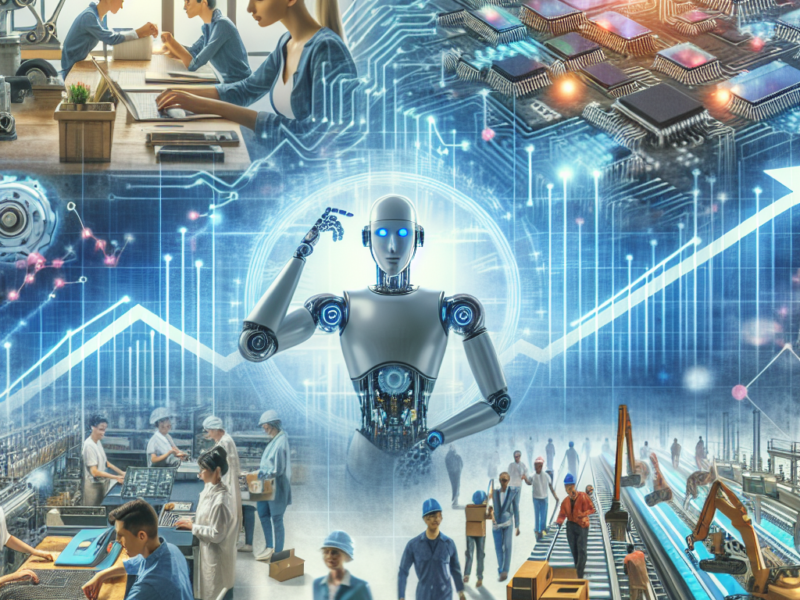The Rise of AI: What It Means for America’s Workforce and Economy
As artificial intelligence (AI) technology continues to evolve and find applications across various sectors, its impact on the American workforce and economy has become a topic of intense discussion. With advancements in machine learning, natural language processing, and robotics, companies are increasingly integrating AI systems into their operations. While this technological revolution holds the promise of increased efficiency and productivity, it also raises critical questions about the future of jobs, workforce skills, and economic inequality in America.
The Transformation of Work
AI is reshaping the nature of work in several key ways. First and foremost, it is automating repetitive and mundane tasks that have historically been performed by humans. This trend is particularly evident in manufacturing, where robots can now take on assembly line duties, reducing the need for human labor in some areas. However, automation isn’t limited to physical tasks; AI tools can automate data analysis, customer service inquiries, and administrative functions, thereby affecting white-collar jobs as well.
While some jobs will inevitably be lost to AI, the technology also has the potential to create new opportunities. The rise of AI will likely give birth to entirely new industries and roles that do not yet exist. For instance, jobs in AI development, maintenance, and ethical governance are expected to grow. However, these roles often require specialized skills and advanced education, highlighting the need for workforce reskilling.
The Skills Gap
As AI proliferates, many workers will find themselves in need of retraining to meet the demands of a changing job market. The World Economic Forum estimates that by 2025, 85 million jobs may be displaced due to a shift in labor between humans and machines. Simultaneously, 97 million new roles may emerge that are more suited to the new division of labor.
To navigate this challenging landscape, educational institutions and corporations must invest in reskilling and upskilling initiatives. Programs that emphasize coding, data analysis, and critical thinking will be essential. Additionally, soft skills such as creativity, problem-solving, and emotional intelligence will become invaluable as humans collaborate with AI technologies.
Economic Implications
The economic ramifications of AI are profound and multifaceted. On one hand, increased productivity driven by AI could lead to economic growth, with businesses able to produce goods and services more efficiently. This growth can lead to higher profits, potentially benefiting shareholders and stimulating investment in innovation.
On the other hand, the economic benefits of AI may not be distributed evenly. As productivity increases, there is a risk that income inequality will widen, with wealth concentrated among business owners and high-skilled workers, while lower-skilled workers struggle to find gainful employment. Policymakers face a pressing challenge in ensuring that the benefits of AI are widely shared, rather than exacerbating existing economic disparities.
The Role of Policy
As America grapples with the implications of AI on its workforce and economy, sound policy decisions will be paramount. Policymakers must prioritize investment in education and training programs to equip the workforce with the necessary skills for the future. This could include partnerships between governments, educational institutions, and private companies to create targeted training initiatives and apprenticeships.
Additionally, social safety nets may need to evolve to support individuals who face job displacement due to automation. Concepts such as universal basic income (UBI) are gaining traction as potential solutions, providing a financial buffer for those transitioning between jobs.
Conclusion
The rise of AI presents both opportunities and challenges for America’s workforce and economy. While the technology holds the potential to drive efficiency and economic growth, it also raises critical questions about job displacement, skills mismatches, and economic inequality. As the nation moves forward, a collaborative approach involving educational institutions, businesses, and policymakers will be essential to harness the benefits of AI while mitigating its risks. Embracing change, investing in human capital, and promoting inclusive growth will ensure that the future of work in America is as equitable as it is innovative.











